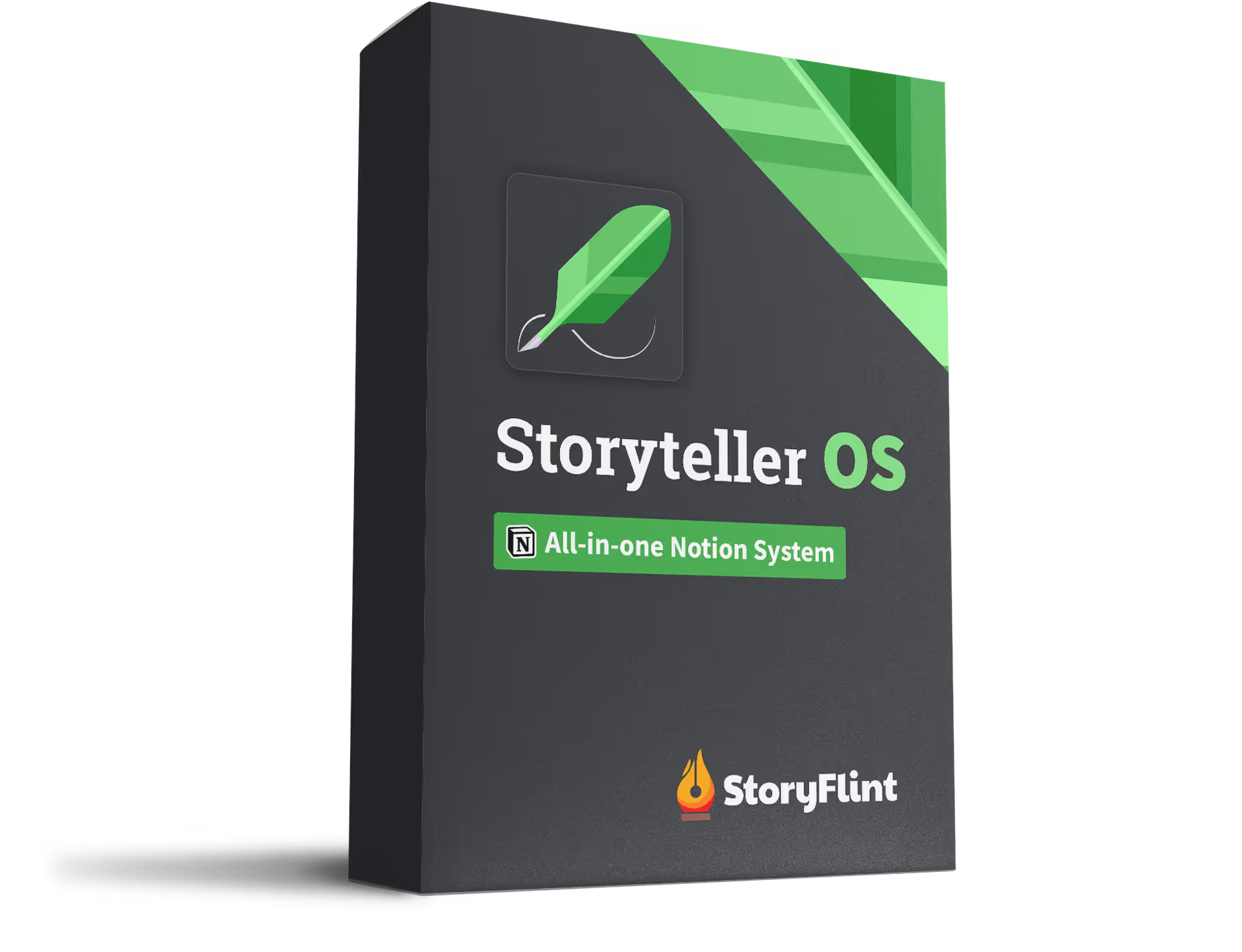Starting a story is like setting the stage for an unforgettable concert. It’s your chance to draw the audience in, make them sit up, and pay attention. The first scene is crucial—it sets the tone, introduces the world, and sparks curiosity. Here’s your guide to crafting an opening that hooks your audience from the very first line.
Why is the First Scene Important?
The opening scene in any form of storytelling, whether it's a book, movie, or TV show, is crucial as it serves as the audience's first encounter with the narrative, setting the mood and drawing them into the world being presented.
An engaging start can significantly influence whether the audience decides to continue; many viewers decide if they will keep watching a show or movie within the first ten minutes. Additionally, in an era where the average human attention span is a mere eight seconds, capturing interest right away is more important than ever.
A strong beginning can:
- Capture Immediate Attention: A strong opening grabs the audience's focus right away, ensuring they are instantly drawn into the narrative.
- Set Clear Expectations: Establishes the tone, mood, and genre, helping the audience understand the type of experience they are about to embark on.
- Introduce Key Elements: Offers an early introduction to important characters, settings, or themes, allowing the audience to connect with the story's framework.
- Engage Emotionally: Evokes curiosity or emotional responses, encouraging the audience to invest in the story and its progression.
- Build Anticipation: Creates intrigue and raises questions, compelling the audience to seek answers and continue engaging with the story.
- Facilitate Understanding: Provides clarity on the narrative's direction, making it easier for the audience to follow and appreciate the unfolding events.
- Enhance Memorability: An impactful opening leaves a lasting impression, making the story more memorable and enjoyable for the audience.
Checklist of Essentials for the First Scene
To make your opening truly impactful, it’s important to include the following elements:
- Engage with a Hook: Present an intriguing question or mystery to engage readers and encourage them to keep turning the pages for answers.
- Introduce Key Characters: Present the protagonist or important characters early on to build a connection with the audience and provide insight into their personalities.
- Establish the Tone: Use language and style that reflect the overall mood of the story, whether it’s suspenseful, humorous, or dramatic.
- Hint at Conflict: Introduce a hint of tension or conflict to pique curiosity and lay the foundation for the story’s central challenges.
- Set the Scene: Be sure to establish the time and setting of the story to anchor the audience and enhance their ability to visualize the world you've created.
Techniques to Use for Your First Scene
Action-Packed Start
The story begins with immediate high-stakes action or a dramatic event, captivating the audience with excitement and urgency. This technique effectively draws them in, immersing them right into the heart of the story's momentum.
Mysterious Beginning
Start by presenting a captivating event or thought-provoking question that sparks curiosity. This strategy invites readers to delve deeper for insights, engaging their minds and keeping their interest alive as the story progresses.
Character Introduction
Focusing on a compelling and relatable protagonist is key to helping your audience connect emotionally with the character right from the start. This connection not only deepens their investment in the character's journey but also enriches their experience of the overall narrative.
Descriptive Setting Establishment
This technique vividly illustrates the story's setting, immersing readers in its world and establishing a compelling atmosphere. By grounding the reader in the narrative, it makes the environment feel tangible and authentic.
Dialogue-Driven Scene
Start with an engaging conversation that uncovers essential character dynamics and plot elements, drawing readers into the interpersonal relationships and conflicts. Dialogue efficiently conveys tone and context, making it a powerful tool for establishing the scene.
Flashback or Flash-Forward
Using a temporal shift adds context and hints at future events, making the story more intriguing and layered. This technique can really add depth and keep your audience excited about what's to come.
Read more about how to write flashbacks.
Internal Monologue
Opens with a character's thoughts, offering insight into their motivations and inner conflicts. This intimate glimpse into a character's psyche can create a strong emotional connection and interest in their personal journey.
Unusual or Surprising Event
Captures attention with an unexpected occurrence, setting a unique tone and prompting questions that drive the narrative forward. This approach ensures that the story begins on an engaging and memorable note.
Read more about how to write a prologue.
Examples of Effective Story Beginnings
1984
The opening of "1984" by George Orwell immediately engages with a hook by presenting a striking and unusual fact: the clocks striking thirteen. This sets a tone of disorientation and curiosity, effectively hinting at the dystopian world to come. The vivid imagery of the grim setting, coupled with the introduction of Winston Smith, grounds the reader in an oppressive atmosphere and introduces the central character who will navigate this unsettling world.
Fahrenheit 451
Ray Bradbury's "Fahrenheit 451" begins with a vivid depiction of Guy Montag reveling in the act of burning books. This scene establishes the novel’s tone and theme of destruction and censorship. Montag’s introduction amidst flames and ashes not only sets the scene but also hints at the underlying conflict between knowledge and ignorance, engaging readers with the stark imagery and immediate action.
The Hobbit
The opening of "The Hobbit" by J.R.R. Tolkien begins with the iconic line: "In a hole in the ground there lived a hobbit." This simple yet captivating hook invites readers into the enchanting world of Middle-earth. Introducing Bilbo Baggins in his cozy hobbit-hole sets a warm, whimsical tone against the adventure to come. The vivid imagery of the Shire and Bilbo’s comfortable life establishes a strong sense of place and character, preparing readers for an unexpected journey.
Back to the Future
The film opens with a sequence that establishes the setting through visual storytelling, introducing Doc’s eccentric personality through his cluttered lab filled with clocks. This scene also hints at the central theme of time travel. By setting the stage without dialogue, it captures the audience's attention and sets expectations for a story that blends science fiction with adventure.
Groundhog Day
The film starts by introducing Phil, the main character, showcasing his dismissive attitude through his interactions. This character-driven introduction sets the comedic tone and hints at the conflict—Phil’s struggle with his own narcissism. The opening scene effectively establishes the story's premise and hooks the audience with Phil’s flawed yet intriguing persona.
The Matrix
The Matrix opens with a high-stakes chase scene, immediately throwing viewers into the action. This dramatic opening hooks the audience with intrigue and sets a dark, suspenseful tone. The introduction of Trinity’s capabilities hints at the underlying conflict between reality and illusion, while the urban setting immerses viewers in the film’s cyberpunk world.
Logan
The opening scene of "Logan" redefines the character’s persona and sets a somber, gritty tone. It begins with Logan reluctantly engaging in a brutal fight, hinting at his internal conflict and the toll that time and life have taken on him. The vivid imagery of a weary, aging Wolverine immediately captures the audience’s attention and establishes the darker themes of the film.
Conclusion
Crafting a compelling story beginning is an art form that requires a balance of intrigue, clarity, and engagement. By focusing on the essential elements and employing effective techniques, you can create an opening scene that captivates your readers and sets the stage for an unforgettable narrative.




